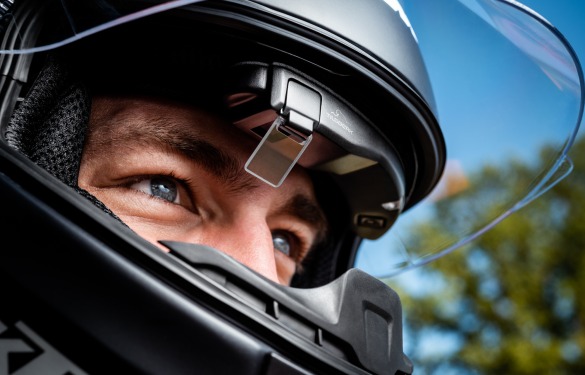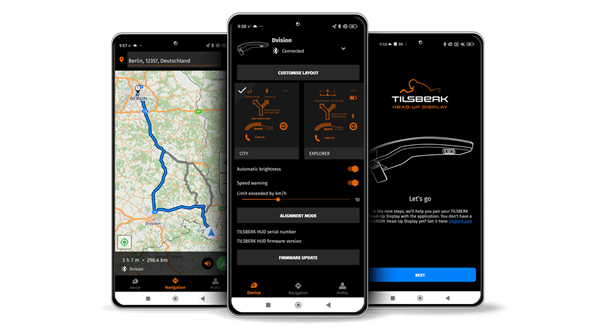Sygic has partnered with a German-based company Digades to develop an innovative head-up display explicitly designed for motorcycle riders. The system utilizes Sygic's Mobile SDK to offer personalized routing and turn-by-turn navigation tailored for motorbikers. This system allows riders to stay on course without taking their eyes off the road.
Tilsberk, a brand of Digades, developed a head-up display designed to project critical information onto a motorcycle rider's helmet visor, including speed limits, actual speed, upcoming turns, and the time & distance travelled. The device can be connected to a rider's phone via Bluetooth and has a battery life of up to 12 hours. The system also supports route import through GPX files or direct connection to the calimoto app. The device uses high-quality TomTom maps to offer personalized routing and turn-by-turn navigation in a compact format.

Sygic played a small but significant part in the development with its Mobile SDK. Digades utilized Sygic's technology to streamline the development process and to create a product that meets the specific needs of motorcyclists. According to Digades Product Owner Christoph Lebelt "Working with Sygic is a pleasure. Their Mobile SDK provided the perfect platform for our head-up display system, allowing us to create a product that is truly unique in the market."
According to Štefan Jančiga, Managing Director of Sygic Navigation, "Our collaboration with Digades demonstrates the versatility of our Mobile SDK and its ability to help companies expedite their development and execute their vision. We are excited to see the benefits that the Head-Up Display will bring to motorcyclists around the world."

The Tilsberk head-up display can be controlled through a dedicated app, where riders can customize the display, start a route, and access other features. Riders can choose between variety of modules according to their intended usage and preferences.

Developing a head-up display for motorcycles presented several challenges to address. One of the key considerations was ensuring the device was compact enough to be mounted on a motorcycle helmet while also being durable enough to withstand various weather conditions and vibrations.
Another important aspect was an energy-saving construction to ensure that the device's battery could last throughout a full day trip. Furthermore, in order to prioritize safety and minimize driver distractions, the developers intentionally reduced the complexity of the displayed data, focusing solely on the essential information.
Despite these challenges, and with over 7000 hours of development, the resulting Tilsberk head-up display is a compact and reliable device that offers real-time critical information to riders, allowing them to stay focused on the road and enjoy a safer, more enjoyable ride.
